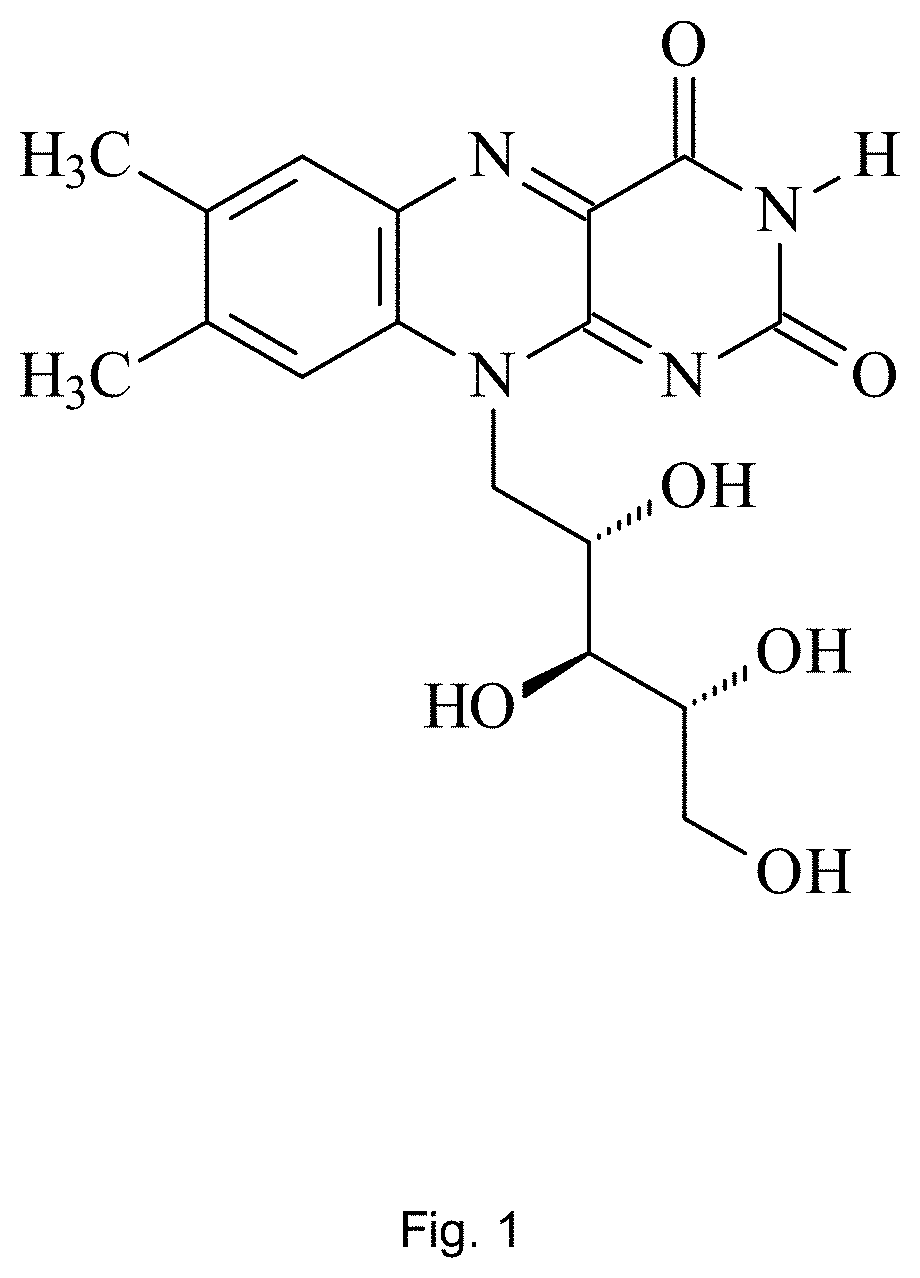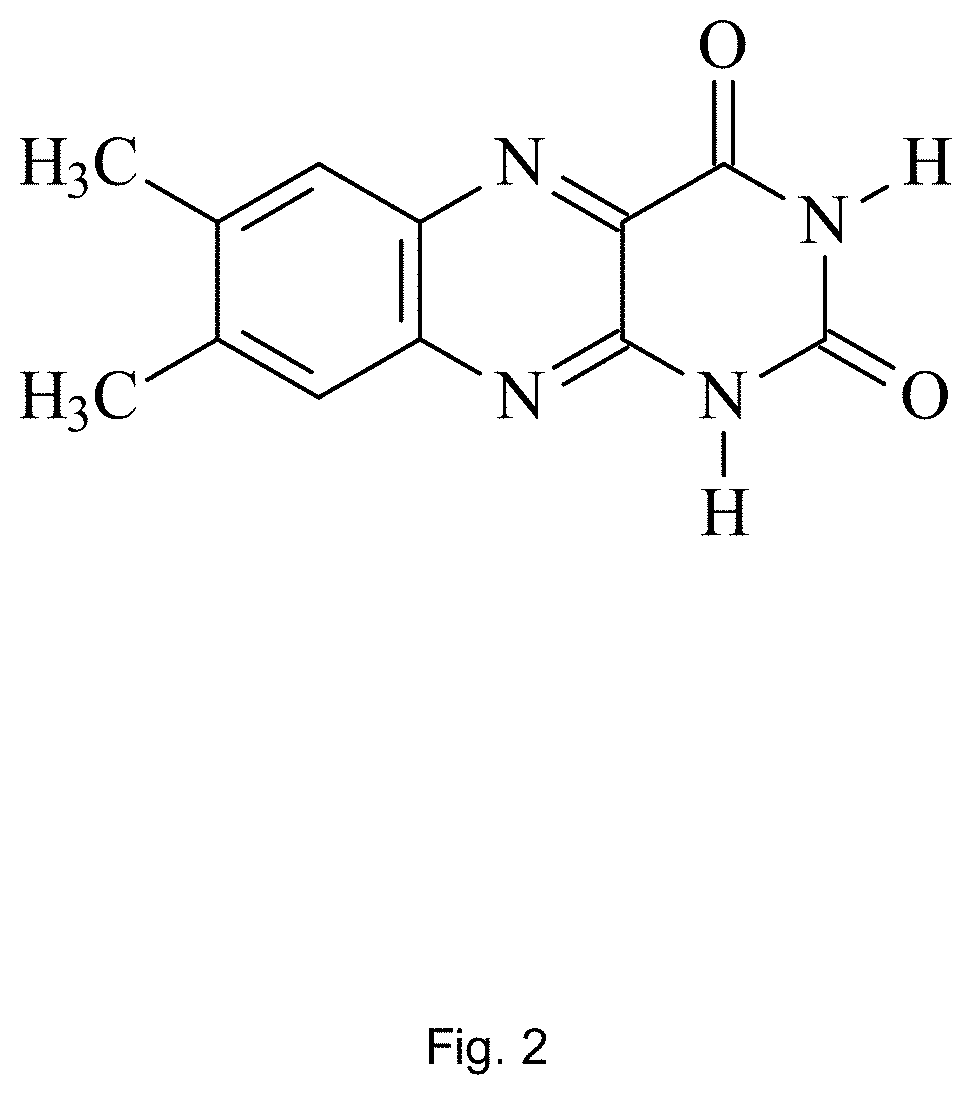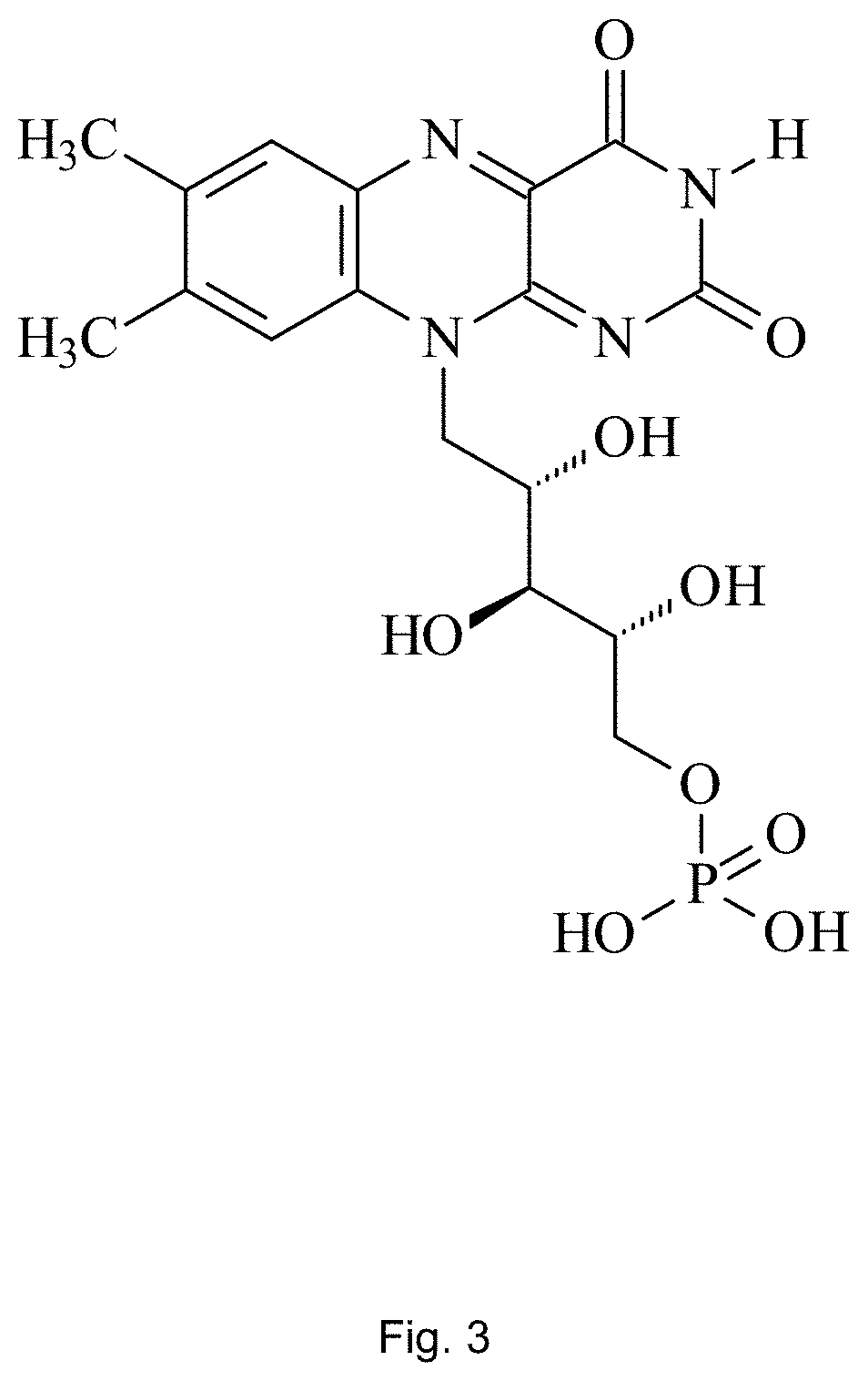Photodynamic method of inhibiting growth of a microbial plant pathogen
a technology of microbial pathogens and photodynamic inhibition, which is applied in the field of photodynamic inhibition of microbial pathogens, can solve the problems of limiting their effectiveness, requiring frequent re-application, and inability to sustain the effect, so as to inhibit the growth of a microbial pathogen of a plant, and increase the microbial lethality of the dye-bearing compound
- Summary
- Abstract
- Description
- Claims
- Application Information
AI Technical Summary
Benefits of technology
Problems solved by technology
Method used
Image
Examples
example 1
Photodynamic Treatment of E. Coli Using 10 ppm CuSO4 and 18 ppm Riboflavin with an LED Blue Light Source
[0075]Tests were carried out with Escherichia coli (E. coli) bacteria (ATCC 25922) in which the organisms were exposed to varying test conditions. The light source for photoactivation was a blue LED light (HIGROW 2019) that was placed 7 cm from the container containing the E. coli. The photoactivator was riboflavin (Aldrich R7649, lot VVXBB4048V, purity 98.6%) at a concentration of 18 ppm. Copper sulfate was used at a concentration of 10 ppm (aqueous solution). The tests included a wetting agent Silwet® L-77 at a concentration of 0.0125%. Silwet® L-77 is a product of Helena Agri-Enterprises, LLC of Collierville, Tenn., and is a nonionic organosilicone surfactant co-polymer that has enhanced wetting and spreading characteristics when used in aqueous sprays. Silwet® L-77 has a CAS Registry Number of 27306-78-1. Each test was carried out for the prescribed time, which varied from 5 m...
example 2
Synergistic E. Coli Kill Using Photosensitizers with Copper Salt and a Broad-Spectrum Light Source
[0081]In this example we compare different photosensitizers (50 μM in water) in combination with and without copper sulfate. An agricultural adjuvant sticker spreader, Silwet® L-77 was also included at a 0.0125% concentration. The conditions experimental were the same as Example 1: E. coli as the test organism, using copper sulfate at 10 ppm, and a light exposure time of 30 minutes. However, in this test series we used a light source that reproduced the spectrum of sunlight, including UV. It is used to in terrariums for housing reptiles, some of which require a UV component in their light. It is referred to here as the Reptile Light (Zoo Med 2019). We tested riboflavin (R), erythrosine (ER), Rose Bengal (RB), Eosin Y (Y) and riboflavin monophosphate (RMP); with and without copper, results (average of 3 tests) are shown in FIG. 15. All of the dyes showed a synergistic kill effect, with r...
example 3
Additional Tests with Higher Photosensitizer Concentrations
[0088]In this example we also used the Reptile Light. In these tests the light intensity was 8,520 Lux, or 26 W / m2 (for comparison, this could be full daylight on a cloudy day, or a common light level in a greenhouse). We observed the following results: Riboflavin (10 ppm)+Silwet (0.0125%) for 30 minutes gave a log reduction of 0.15. Riboflavin at 50 ppm for 1 hour gave a log reduction of 1.6. Silwet (see Helena 2019) is an agricultural nonionic organosilicone surfactant adjuvant wetting and spreading agent commonly used with pesticides, also commonly known as a sticker spreader). Silwet® L-77 has minimal or no antimicrobial activity
[0089]Copper sulfate (10 ppm)+Silwet (0.0125%) for 30 minutes gave a log reduction of 0.13. Copper sulfate at 40 ppm for 30 minutes also gave a log reduction of 0.13. Riboflavin (18 ppm)+copper sulfate (10 ppm)+Silwet (0.0125%) for 30 minutes gave a log reduction of 3.8. Again, we see an improvem...
PUM
 Login to View More
Login to View More Abstract
Description
Claims
Application Information
 Login to View More
Login to View More - R&D
- Intellectual Property
- Life Sciences
- Materials
- Tech Scout
- Unparalleled Data Quality
- Higher Quality Content
- 60% Fewer Hallucinations
Browse by: Latest US Patents, China's latest patents, Technical Efficacy Thesaurus, Application Domain, Technology Topic, Popular Technical Reports.
© 2025 PatSnap. All rights reserved.Legal|Privacy policy|Modern Slavery Act Transparency Statement|Sitemap|About US| Contact US: help@patsnap.com



